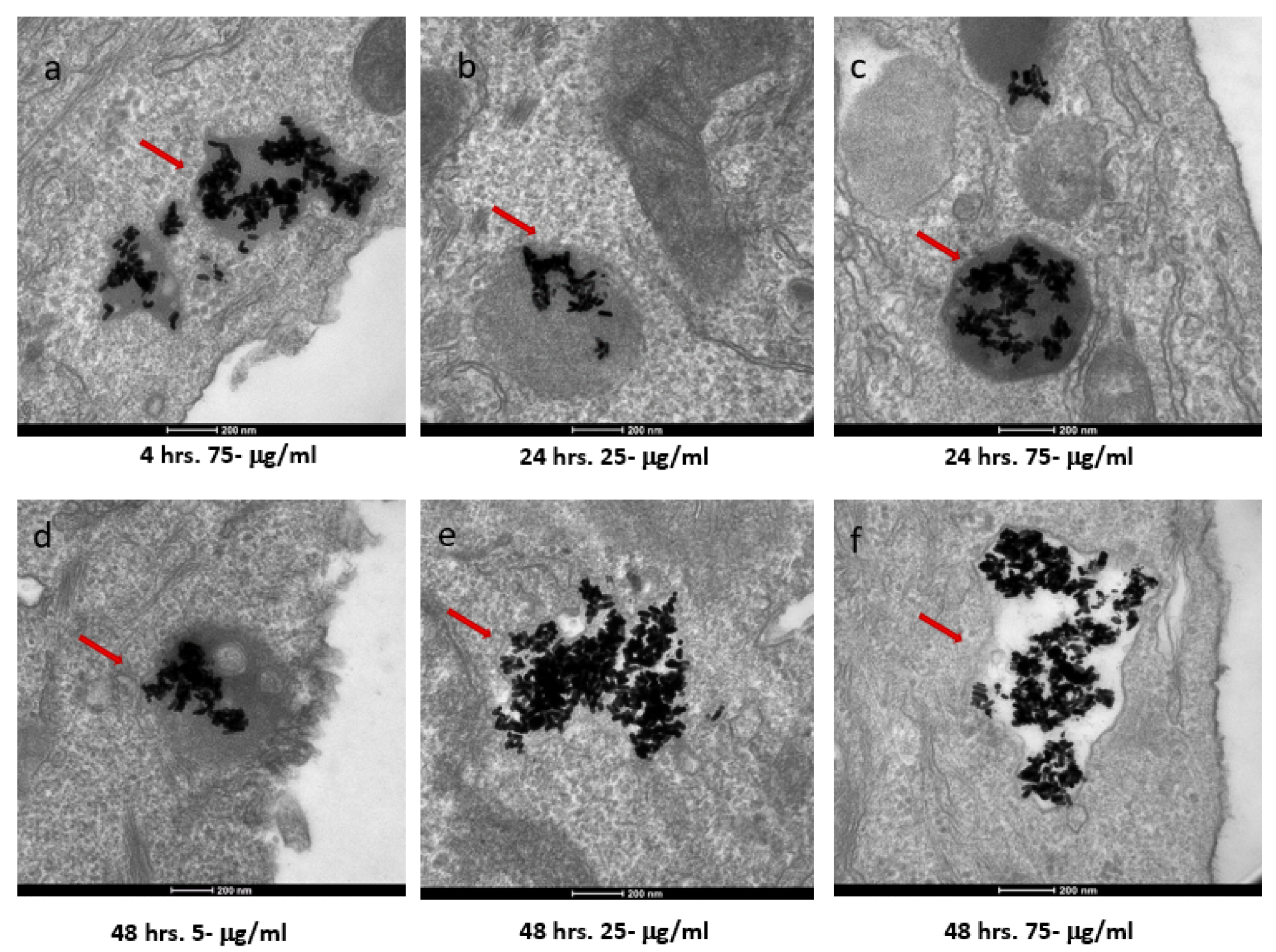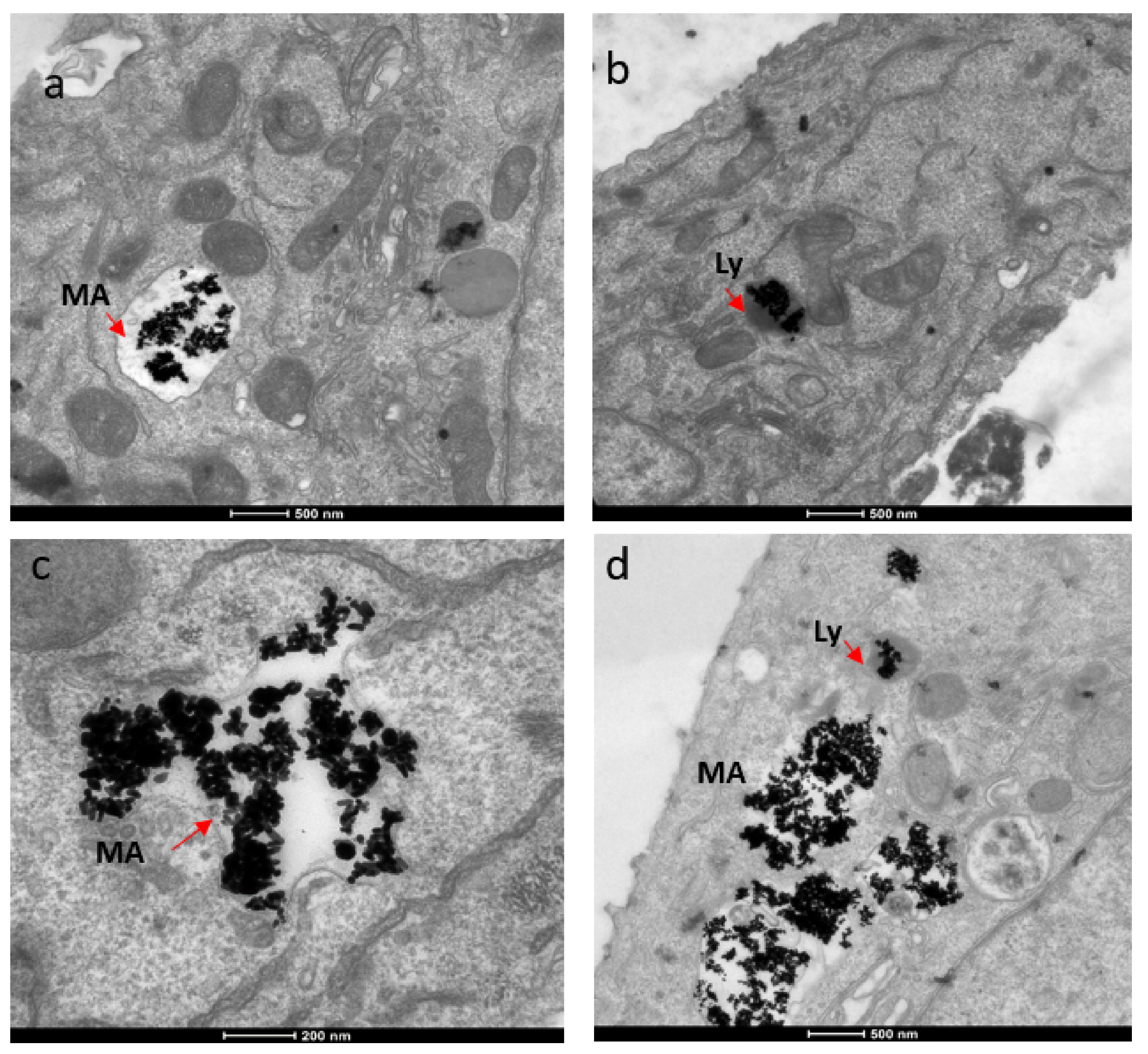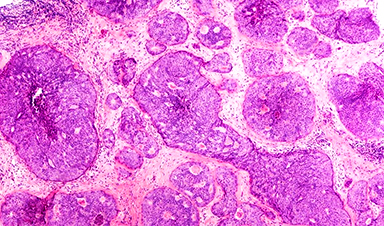In an article recently published in the open-access MDPI journal nanomaterials, researchers investigated the mechanism of interaction between nanoscale materials and specific cells for biomedical applications, primarily related to targeted delivery and tracing.
Here, the localization, cellular uptake quantity, and response time of gold nanorods in MCF-7 and SKBR-3 breast cancer cells were measured.
Background
The amalgamation of biotechnology and nanotechnology has been a quite fascinating field of research for the last few years.
Currently, nanomaterials are extensively used in biomedical applications such as drug delivery, magnetic or fluorescent bio-imaging, tissue engineering, tracing pathogens in sensitive organs, cancer chemotherapy, and many more. However, each nanomaterial interacts differently with a particular type of cell.
Many studies have shown cellular uptake of gold nanorods by cancer cells. MCF-7 and SKBR-3 cancer cell lines represent HER2-negative and HER2-positive breast cancer models, respectively. These cells intake gold nanorods through a mechanism occurring at the surface of the cell membrane, called endocytosis.
Inductively coupled plasma mass spectrometry (ICP-MS) can measure the efficiency of targeted delivery and cellular uptake of these nanoparticles, while transmission electron microscopy (TEM) can be used to investigate their localization.

Figure 1. Transmission electron microscope images of gold nanorods with aspect ratio around 3 at different magnifications (a–c). (d) UV–visible spectrum analysis of the prepared gold nanorods showing longitudinal and transverse plasmons around 690 nm and 514 nm, respectively. © White, B., White, M., Nima Alsudani, Z., Watanabe, F., Biris, A., Ali, N., (2022)
About the Study
In this article, researchers investigated the interaction mechanism of gold nanorods (Au NRs) in two types of breast cancer cell lines namely, MCF-7 and SKBR-3. More than 200 Au NRs with an average length and diameter of 36 and 12 nm, respectively, were synthesized using the silver ion-assisted seed-mediated method. Subsequently, MCF-7 and SKBR-3 cells were cultured in a conducive medium and allowed to bind with different concentrations of Au NRs for 1 and 2 days.
The excess Au NRs were washed away from the treated cancels using phosphate buffer saline (PBS) solution followed by treating with the (3-(4,5-dimethylthiazol-2-yl)-2,5-diphenyltetrazolium bromide) (MTT) reagent. Finally, ICP-MS and TEM analyses were performed to investigate the interaction mechanism.

Figure 2. TEM images of AuNRs in SKBR-3 cells at different time points and concentrations. SKBR-3 cells were treated with 5, 25, and 75 μg/mL of AuNRs for 1, 4, 24, and 48 h. Internalization of nanorods was observed starting at 4hourincubation with 75 μg/mL (a). After 24hourof incubation, internalization was observed with the 25 μg/mL (b) and 75 μg/mL concentrations (c). For cells incubated for 48 h, we observed internalization with 5, 25, and 75 μg/mL concentrations (d, e, and f, respectively). Red arrows point to gold nanorods localized in SKBR-3 cells. Electron photomicrographs shown are representative of at least three independent experiments with similar conditions. © White, B., White, M., Nima Alsudani, Z., Watanabe, F., Biris, A., Ali, N., (2022)
Observations
TEM images showed Au NRs had longitudinal and transverse plasmon resonances at around 680 and 514 nm, respectively. The average zeta potential of the NRs was −47.18 ± 4.26 mV. Au NRs did not show any cytotoxicity in healthy human cells. MTT methods indicated that the MCF-7 cells were less sensitive to Au NR exposure than the SKBR-3 cells for longer exposure times at higher concentrations. The SKBR-3 cells exhibited a drop in cell vitality due to higher sensitivity, whereas the MCF-7 cells had almost no drop in cell viability.
Both types of cells demonstrated a different pattern in cellular uptake of Au NRs for different exposure times and concentrations. The SKBR-3 cells had a constant cellular uptake between one to four hours, but 25 μg/mL Au NRs concentration had a higher uptake than the 75 μg/mL sample, i.e. lower concentration had a higher cellular uptake. In contrast, in MCF-7 cells, the 75 μg/mL AuNR-treated cell samples exhibited higher cellular uptake than 5 and 25 μg/mL samples, i.e. higher concentration samples had higher cellular uptake than lower concentration samples.
Furthermore, TEM analysis showed that the Au NRs interacted with the cell membrane of both cancer cells starting from one to 48 hours of exposure time. However, the Au NRs entered into the cell (i.e. internalized) for the samples with concentrations of 25 and 75 μg/mL. The 5 μg/mL concentration samples were never internalized. Moreover, the minimum exposure time for internalization was one hour and four hours for the MCF-7 and SKBR-3 cells, respectively.
The mechanism for the cellular uptake of the Au NRs was primarily micropinocytosis instead of receptor-mediated endocytosis. These Au NRs-carrying macropinosomes further interacted with the lysosomes inside the cells.

Figure 3. TEM images showing localization of gold nanorods in macropinosomes and lysosomes in both SKBR-3 and MCF-7 cell lines. AuNR localization in (a) macropinosomes (MA) and (b) lysosomes (Ly) of SKBR-3 cells. (c) Macropinosomes (MA) containing gold nanorods in MCF-7 and (d) lysosomes (Ly) containing gold nanorods in MCF-7. Red arrows point out macropinosomes and lysosomes containing gold nanorods in each image. Electron photomicrographs shown are representative of at least three independent experiments with similar conditions. © White, B., White, M., Nima Alsudani, Z., Watanabe, F., Biris, A., Ali, N., (2022)
Conclusions
To conclude, the researchers of this study investigated the interaction of Au NRs in two types of breast cancer cell lines, i.e. MCF-7 and SKBR-3. The shape, size, and zeta potential of Au NRs had different effects on cell vitality and toxicity of different cancer cells. Additionally, both cell types had different patterns of cellular uptake for Au NRs at different concentrations and exposure times.
The Au NRs did not enter into the cancer cells for samples with lower concentrations of NRs or lower exposure time. Also, the cellular uptake mechanism was primarily driven by micropinocytosis. These findings will help improve biomedical applications related to targeted drug delivery, tracing, and bio-imaging involving nanomaterials.
News
Repurposed drugs could calm the immune system’s response to nanomedicine
An international study led by researchers at the University of Colorado Anschutz Medical Campus has identified a promising strategy to enhance the safety of nanomedicines, advanced therapies often used in cancer and vaccine treatments, [...]
Nano-Enhanced Hydrogel Strategies for Cartilage Repair
A recent article in Engineering describes the development of a protein-based nanocomposite hydrogel designed to deliver two therapeutic agents—dexamethasone (Dex) and kartogenin (KGN)—to support cartilage repair. The hydrogel is engineered to modulate immune responses and promote [...]
New Cancer Drug Blocks Tumors Without Debilitating Side Effects
A new drug targets RAS-PI3Kα pathways without harmful side effects. It was developed using high-performance computing and AI. A new cancer drug candidate, developed through a collaboration between Lawrence Livermore National Laboratory (LLNL), BridgeBio Oncology [...]
Scientists Are Pretty Close to Replicating the First Thing That Ever Lived
For 400 million years, a leading hypothesis claims, Earth was an “RNA World,” meaning that life must’ve first replicated from RNA before the arrival of proteins and DNA. Unfortunately, scientists have failed to find [...]
Why ‘Peniaphobia’ Is Exploding Among Young People (And Why We Should Be Concerned)
An insidious illness is taking hold among a growing proportion of young people. Little known to the general public, peniaphobia—the fear of becoming poor—is gaining ground among teens and young adults. Discover the causes [...]
Team finds flawed data in recent study relevant to coronavirus antiviral development
The COVID pandemic illustrated how urgently we need antiviral medications capable of treating coronavirus infections. To aid this effort, researchers quickly homed in on part of SARS-CoV-2's molecular structure known as the NiRAN domain—an [...]
Drug-Coated Neural Implants Reduce Immune Rejection
Summary: A new study shows that coating neural prosthetic implants with the anti-inflammatory drug dexamethasone helps reduce the body’s immune response and scar tissue formation. This strategy enhances the long-term performance and stability of electrodes [...]
Scientists discover cancer-fighting bacteria that ‘soak up’ forever chemicals in the body
A family of healthy bacteria may help 'soak up' toxic forever chemicals in the body, warding off their cancerous effects. Forever chemicals, also known as PFAS (per- and polyfluoroalkyl substances), are toxic chemicals that [...]
Johns Hopkins Researchers Uncover a New Way To Kill Cancer Cells
A new study reveals that blocking ribosomal RNA production rewires cancer cell behavior and could help treat genetically unstable tumors. Researchers at the Johns Hopkins Kimmel Cancer Center and the Department of Radiation Oncology and Molecular [...]
AI matches doctors in mapping lung tumors for radiation therapy
In radiation therapy, precision can save lives. Oncologists must carefully map the size and location of a tumor before delivering high-dose radiation to destroy cancer cells while sparing healthy tissue. But this process, called [...]
Scientists Finally “See” Key Protein That Controls Inflammation
Researchers used advanced microscopy to uncover important protein structures. For the first time, two important protein structures in the human body are being visualized, thanks in part to cutting-edge technology at the University of [...]
AI tool detects 9 types of dementia from a single brain scan
Mayo Clinic researchers have developed a new artificial intelligence (AI) tool that helps clinicians identify brain activity patterns linked to nine types of dementia, including Alzheimer's disease, using a single, widely available scan—a transformative [...]
Is plastic packaging putting more than just food on your plate?
New research reveals that common food packaging and utensils can shed microscopic plastics into our food, prompting urgent calls for stricter testing and updated regulations to protect public health. Beyond microplastics: The analysis intentionally [...]
Aging Spreads Through the Bloodstream
Summary: New research reveals that aging isn’t just a local cellular process—it can spread throughout the body via the bloodstream. A redox-sensitive protein called ReHMGB1, secreted by senescent cells, was found to trigger aging features [...]
AI and nanomedicine find rare biomarkers for prostrate cancer and atherosclerosis
Imagine a stadium packed with 75,000 fans, all wearing green and white jerseys—except one person in a solid green shirt. Finding that person would be tough. That's how hard it is for scientists to [...]
Are Pesticides Breeding the Next Pandemic? Experts Warn of Fungal Superbugs
Fungicides used in agriculture have been linked to an increase in resistance to antifungal drugs in both humans and animals. Fungal infections are on the rise, and two UC Davis infectious disease experts, Dr. George Thompson [...]





















